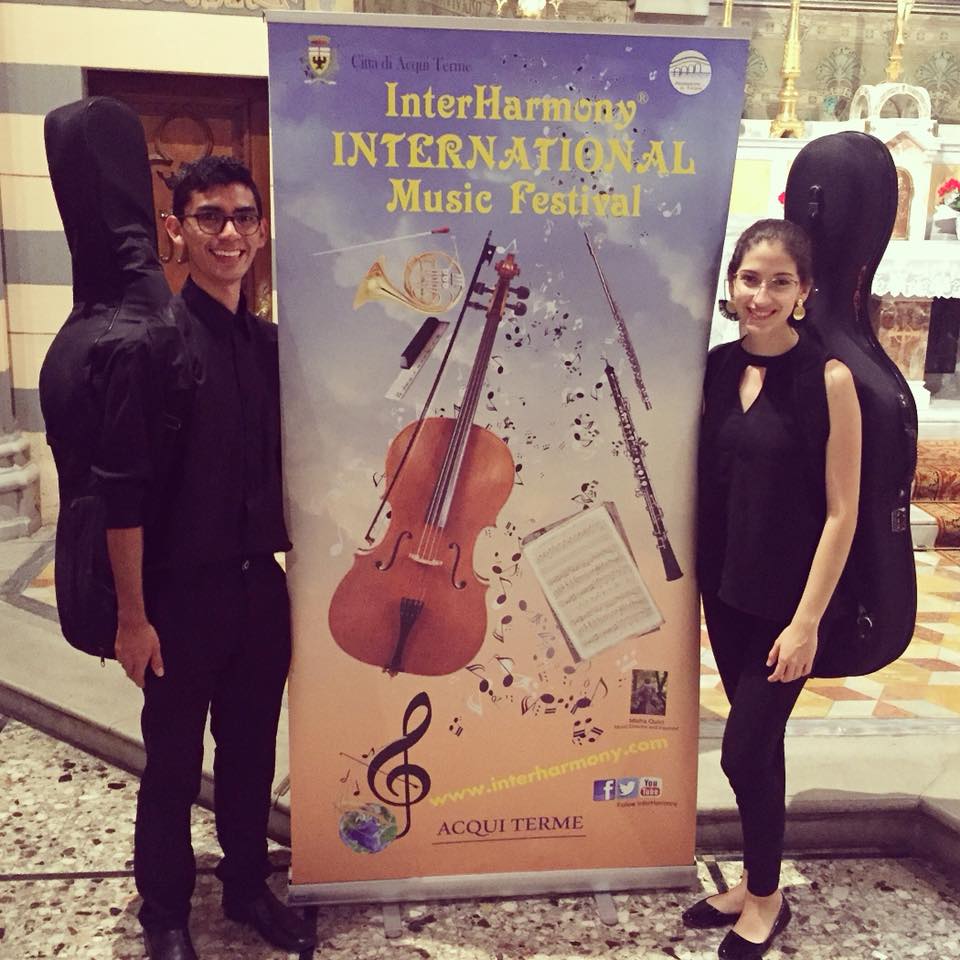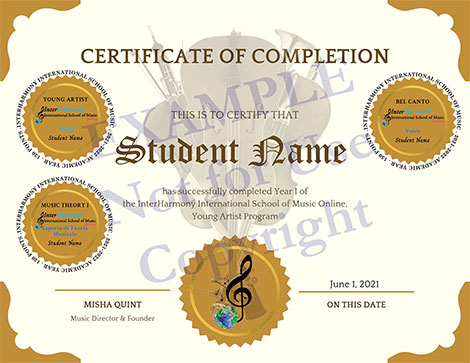- Digital Badge Award Program
- What are the benefits of Digital Badges?
- Governance
Digital Badges, Skill Recognition, and Certificates:
What is a Digital Badge?
- A Digital Badge is a new type of micro-credential that allows you to show specific musical skills that you have gained through learning or professional experiences.
- A Digital Badge is an icon but it is not a static image. It is clickable and houses information such as the
- Issuing institution
- The date earned
- The criteria required to earn the badge
- And the evidence that shows that you have met the required criteria.
- Digital Badges are dynamic credentials that you own, so you can decide how you want to use them. Once you earn a badge you own it, so you may use it however you wish. Digital Badges can be put on social media sites, such as LinkedIn, added as a link on your digital resume, or embedded in your e-portfolio. Badges also let a earner share their abilities online with family, friends, and musical connections the world over in a verifiable and trusted way.

How Can Students Make Their Journey To New Achievements And Skills Easier And Earn Recognition For Their Growing Expertise Along The Way? Digital Badges.
A badge is a type of micro-credential. Badges are guided by a competency-based statement and linked to student learning outcomes that can be assessed. Once the competencies are met, the badges can be issued.
What are certificates?
Students receive certificates at the end of the school year in completion of the Fall and Spring Semesters, or at the end of the festival displaying Digital Badges that have been earned during that time.
What are the Benefits of InterHarmony’s Digital Badge Award Program?
Earn stackable skills that differentiate you, academically and professionally.
While hundreds of individuals might earn the same badge, each badge is unique due to its verifiable metadata. Metadata includes information regarding issuing institution, date of issuance, criteria for earning and evidence that the learner has met the criteria. Evidence is supporting information such as: the learner's work, rubrics, course information, peer or expert endorsement, narratives, documents, videos, etc. Evidence can be uploaded or shared via a link. Each program will require a distinct piece of evidence that will be embedded in your badge.
Display badges that contain your achievements and competencies to employers, colleagues and peers.
Digital Badges are valuable in that they offer more ways to showcase and share skills, knowledge and achievements, than a typical transcript. Digital Badges can be shared:
- On your social media accounts, such as LinkedIn.
- On your digital resumes.
- In your ePortfolio.
- In your email signature.
I’ve earned a badge. What do I do now?
Take a bow! Shout it out! Once you’ve earned a Badge, you’ll want to shout about it. This is easy with Digital Badges – the unique URL allows you to add your achievements to a resume, website, or social media profile – the more badges you collect, the more sharing you can do to spread the word about how great you are at music via digital identity. Add to social media and share your achievements.
How are Digital Badges distributed?
InterHarmony badges are officially distributed through Credly and can be added to professional social media such as LinkedIn as certified skills. These badges provide an official channel show prospective employers concrete evidence of your skills and abilities. In addition, Young Artist and Precollege students find these badges useful to indicate achievements when applying to colleges. Credly badges can also be shared via Facebook and Twitter, attached to an email signature, or embedded in a website.
More about InterHarmony International Music Festival Digital Badges and Anatomy
More about InterHarmony International School of Music Badges and Anatomy
Governance:
What are micro-credentials?
Micro-credentials are a competency-based form of skills validation which signal that a student has demonstrated specific knowledge, skills, and abilities at an appropriate level. These can be earned through a variety of learning experiences including observation and experience and are awarded in the form of Credly Digital Badges.
What is a Digital Badge?
A Digital Badge is the visual representation of a participants having earned a micro-credential. Each badge is guided by a competency-based statement which is linked to student learning outcomes that are assessed by InterHarmony’s Selection Committee, Artist Faculty and staff. Once these competencies are met, badges are issued. Each Digital Badge contains representations of Criteria met to receive the badge, Categories, Classification or Level, Skills, Standards.
Who can earn Digital Badges?
Badges are divided into collections/earner types, different communities within the InterHarmony family all have the opportunity to earn Digital Badges
- Artist Faculty Master Musicians
- InterHarmony International School of Music Students
- InterHarmony International Music Festival Students
How are they awarded?
Student badges are awarded by recommendation of IISM Artist Faculty or administration in recognition of an achievement, experience, skill, etc. Artist Faculty may fill out a form to request badges for students at any time. Then, the administration works with the faculty member to ascertain that the level of competency is sufficient for that badge and if so, the badge is awarded to the student. Some badges have multiple levels indicating various proficiencies inherent to the skill. As a result, some badges have prerequisites or take months or even years to complete.
Artist Faculty badges are issued to InterHarmony’s internationally-renowned artists in honor of their high achievements as performers, scholars, teachers, and more. Students are able to look at the competencies and skills that our Artist Faculty possess which may aid them on their career path or help them make decisions about which subjects to study more in-depth.


